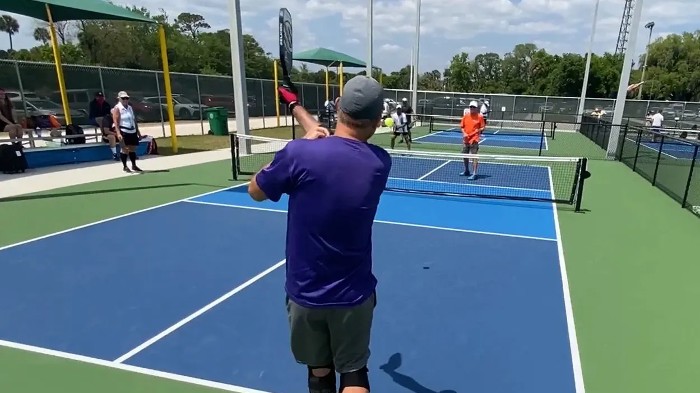Pickleball is a popular racquet sport that combines elements of tennis, badminton, and table tennis. It is played with a paddle and a plastic ball on a small court. However, as the sport gains popularity worldwide, different regions and organizations tend to have their own variations of the rules. This can lead to confusion among players, especially those participating in international tournaments or playing with individuals from different countries. In this blog, we will provide a comprehensive guide to international pickleball rules to help you understand and navigate the nuances of the game.
Fundamental Concepts of the Pickleball Game
Before diving into the international rules of pickleball, let’s quickly go through the fundamental concepts of the game. Pickleball is played on a court similar to a doubles badminton court, measuring 20 feet wide and 44 feet long. The net is set at 36 inches high at the ends and 34 inches high in the center. The game is typically played in doubles, but singles matches are also common.
Server and Receiver Positions
At the start of the game, a coin toss determines the serving team. The server must stand behind the baseline and hit the ball underhand diagonally to the opponent’s service area. The receiver must let the ball bounce and return it after the first bounce. Both players must maintain their positions, with the server staying behind the baseline and the receiver within the serving team’s diagonal court until the ball is returned.

Scoring
In pickleball, only the serving team can score points. The first server starts the game from the right-hand side of the court and will continue to serve until they commit a fault. After that, the serve is switched to the second server on the serving team and will serve from the left side. In doubles play, each team has two chances to serve before their turn ends. Points are scored when the receiving team makes a mistake or fails to return the ball legally. The serving team must earn 11 points to win a game, and there is no requirement for a margin of victory.
Guide to International Pickleball Rules
While the basic principles remain the same, international pickleball rules may differ in certain aspects. Here are some key areas where variations in rules might occur:
Court Dimensions
In some international tournaments, the dimensions of the court can vary slightly from the standard measurements used in North America. The court might be longer or wider, or the net height may differ. It is essential to check the specific rules and guidelines for the tournament or organization you are playing in to ensure you are familiar with the court dimensions being used.
Service Faults
While the general rule of underhand serving remains consistent, some international pickleball rules may have additional restrictions. For example, certain tournaments may require the server to keep both feet behind the baseline until the ball is struck. In others, the ball must be hit below waist level. Being aware of these variations can help you to avoid committing a fault and losing a point.

Frequently Asked Questions
In international pickleball, players must serve underhanded and diagonally, and the serve must clear the non-volley zone. The non-volley zone is a seven-foot area on either side of the net. When the ball is returned, it must bounce once on each side before players can volley it. Additionally, players are not allowed to step into the non-volley zone and hit a volley.
Yes, there are some differences between international and local pickleball rules. International pickleball rules are meant for competitive play and are generally more strict than local rules that may be adapted for casual play. For example, international pickleball rules require players to bounce the ball once on each side before volleying, while local rules may allow for volleying directly from the serve.
Yes, in international pickleball, if a serve does not clear the non-volley zone, it is considered a fault. The serving player gets a second chance to make a legal serve. If the second serve is also a fault, the opponent gets a point.
Yes, international pickleball requires a specific court size. The court measures 20 feet wide and 44 feet long for doubles play. However, for singles play, the court width is reduced to 17 feet. It is essential to ensure the court dimensions adhere to international standards for fair play.
No, international rules do not permit players to step into the non-volley zone after hitting a shot. The non-volley zone, also known as the kitchen, is a designated area around the net that players need to avoid stepping into while hitting volleys. Stepping into the non-volley zone results in a fault, and the opponent gains a point.
Conclusion
Pickleball is a thrilling and fast-paced sport enjoyed by people of all ages around the world. As the sport continues to grow internationally, it is crucial to become familiar with the various international pickleball rules. Understanding these rules will allow you to participate in international tournaments without confusion and enjoy competitive matches with players from different regions. Remember to check the specific rules for each tournament or organization you engage with as they may have their own unique set of regulations. So grab your paddles, hit the court, and enjoy the international pickleball experience!

